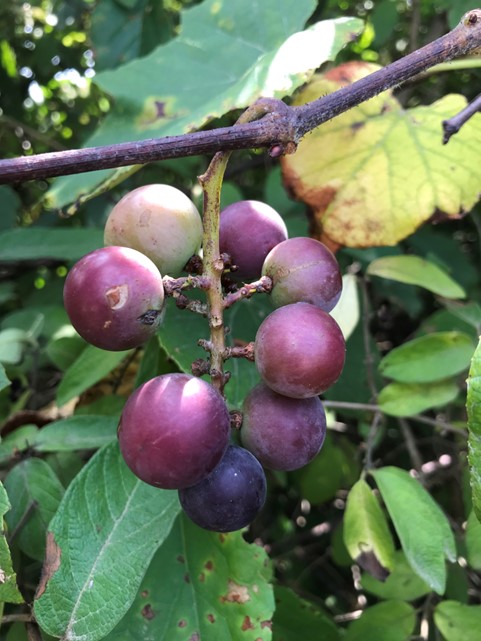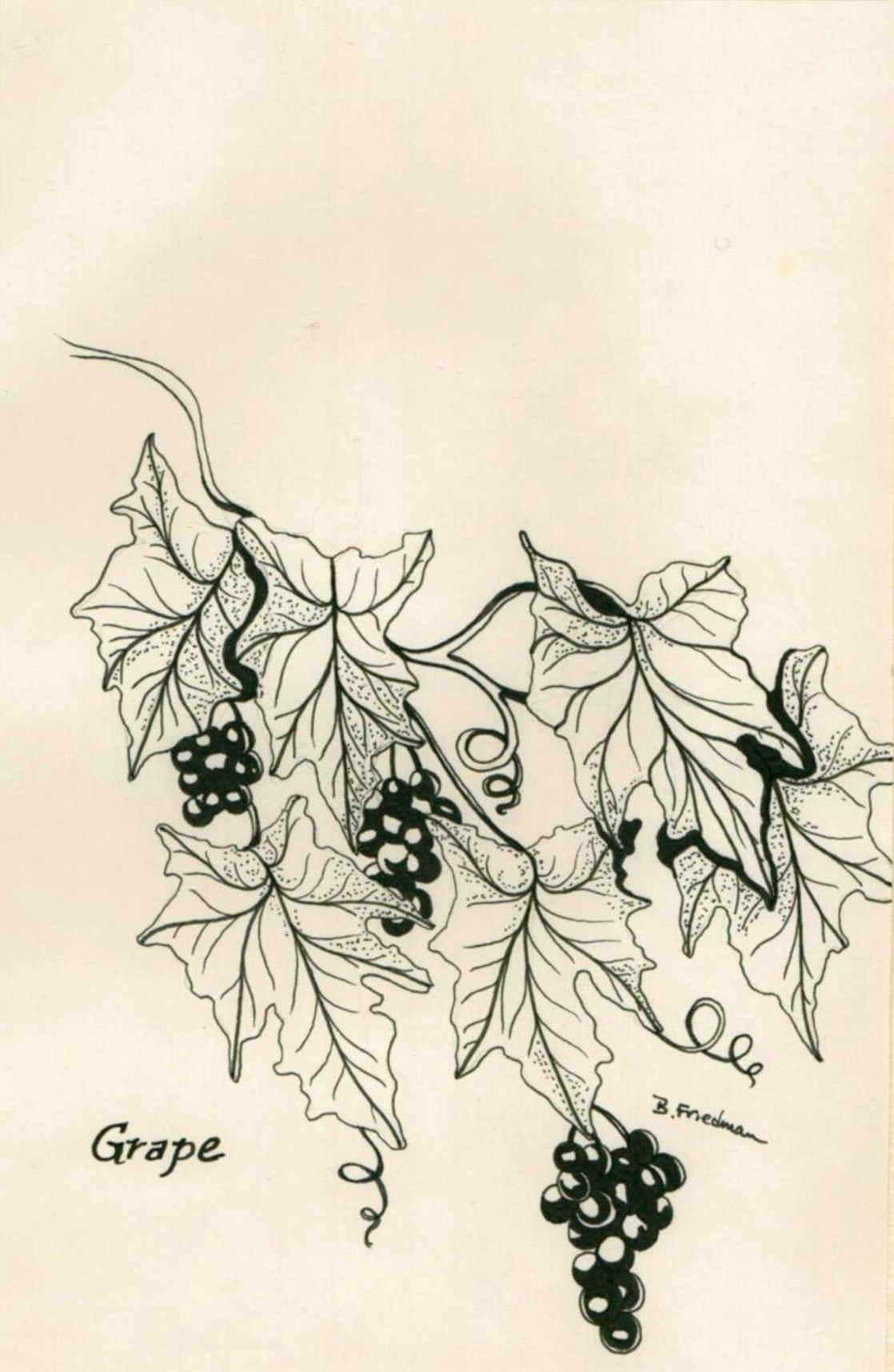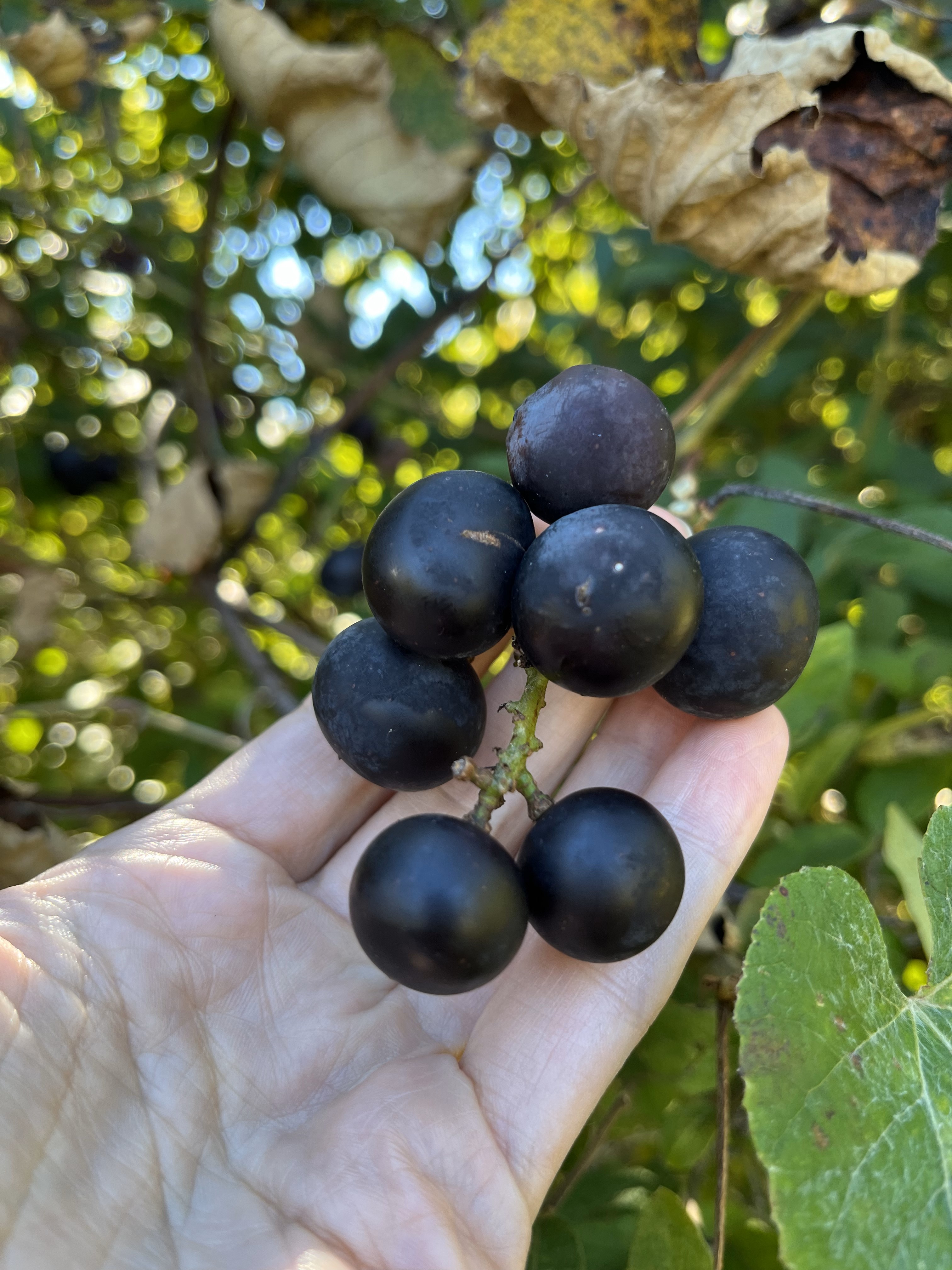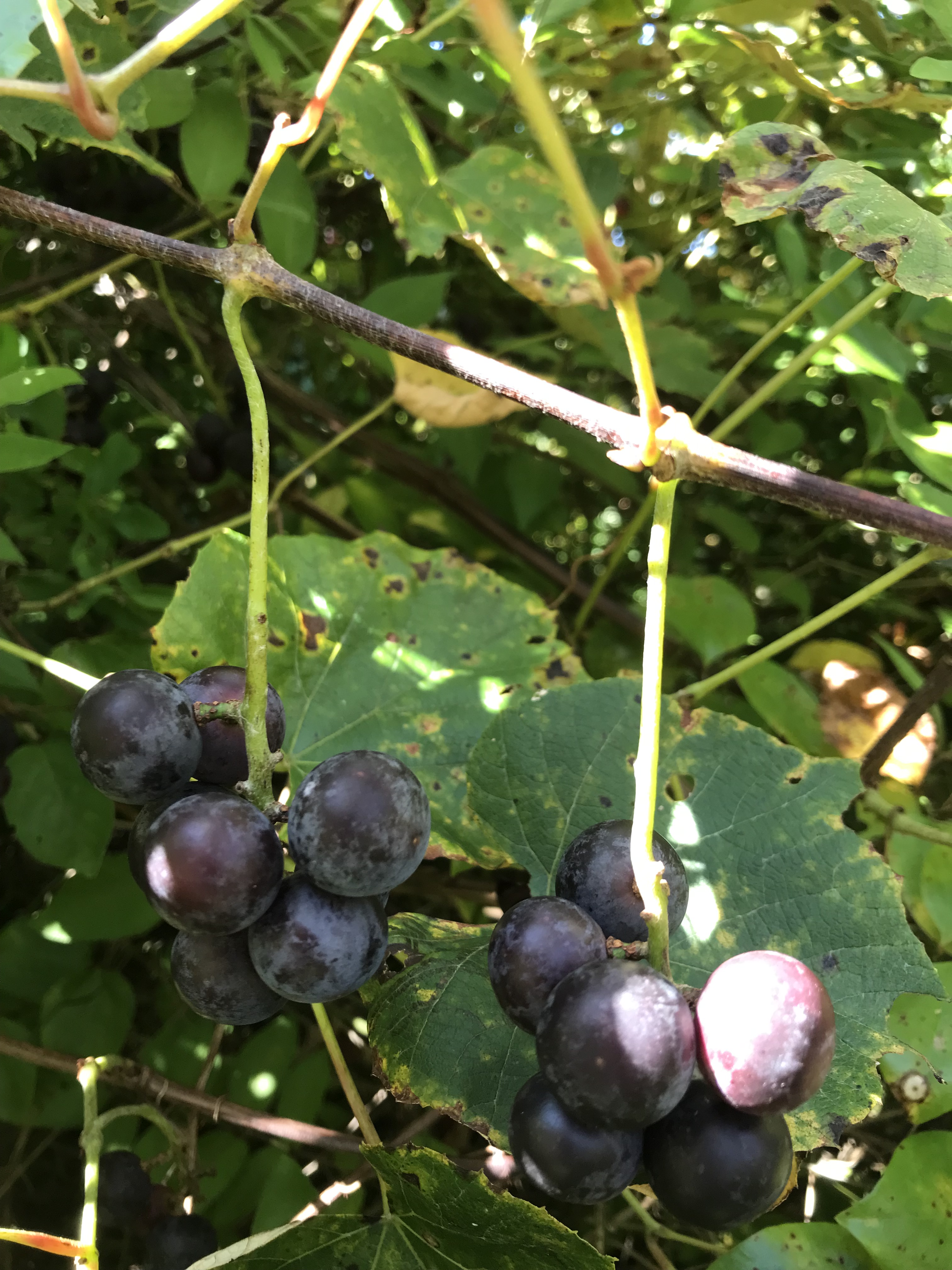
“Gather wild grapes in early September,” Jean Fischer advised in her recipe for Wild Grape Jam with Lime in Montauk Cooks with Friends. “Many vines will not have fruit. The heady rich aroma of ripe grapes and your nose will help you find them.”
It’s true that only the female vines of wild fox grapes will bear fruit. And it’s also true that the galivanting and often overbearing plants sometimes dangle their fruit from such heights that aspiring gatherers can do nothing but inhale the sweet fragrance from below.

Successful grape-pickers – BEWARE of larval ticks, or what some insist are chiggers! – will find bunches (ahem) of recipes in the Montauk Guide and Cook Book published by the Montauk Chamber of Commerce in 1959. The recipes include Montauk Grape Juice from Peggy Joyce, Wild Grape Catsup recipes from Edward M. Lammi and Nancy Dickinson, Venison Jelly, also from Nancy Dickinson, Wild Montauk Grape Conserve from Richard T. Gilmartin, and – perhaps most intriguing – Grape Fudge from Emma Koenig.
Wild fox grapes are found in all the Eastern states except Florida, according to an article in Yesterday’s Island, Today’s Nantucket, an island that shares climate and ecosystems with Montauk. Native Americans cultivated wild grapes for food and medicinal purposes. “The Cherokees used the grapes for relief from diarrhea, urinary tract infections, thrush, and indigestion,” the article says. “The wilted leaves were used to reduce breast tenderness after the birth of a child. The Mohegans made poultices for headaches and pain from the leaves.”

Early colonists may have been more focused on prospects for wine. Grapes bred from native vines thrived here where European transplants failed, although the reverse was also true: aphids on North American grapes shipped to France nearly killed off the industry.
Speaking of the wine industry, Martha’s Vineyard was named for that island’s wild grapes, according to Victoria Bustamante, a local botanist and horticulturist. The fox grape (Vitis labrusca) is what we mostly see in Montauk, which also hosts a less common native species called Vitis aestivalis, the summer or pigeon grape. “Vitis” is the Latin word for “vine,” and the name “fox” is thought to have originated from the grape’s musky smell and taste.

The large grape vines that blanket brush and some trees in Montauk most likely started climbing when the brush and trees were still small, growing as they did. “A very old vine near Abram’s Point measured twenty-one inches around close to the base, and seventeen inches a foot above,” wrote Alice O. Albertson in Nantucket Wild Flowers in 1921.
Tendrils help the vines scrabble up trees and other vegetation. The organs are thigmotropic, according to the Nantucket article – “that is, when one touches an object such as a stem or a stretched wire, a hormone is released in the tendril that alters its straight growth to a rapidly coiling spiral.”
You can see the same reaching and coiling behavior with the tendrils of the wild, invasive white clematis weaving through bushes and trees at this time of year. In both cases the vines seem almost sentient – which is kind of creepy, but also really kind of cool.

Reply or Comment